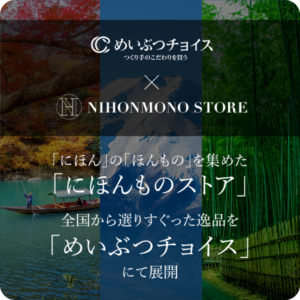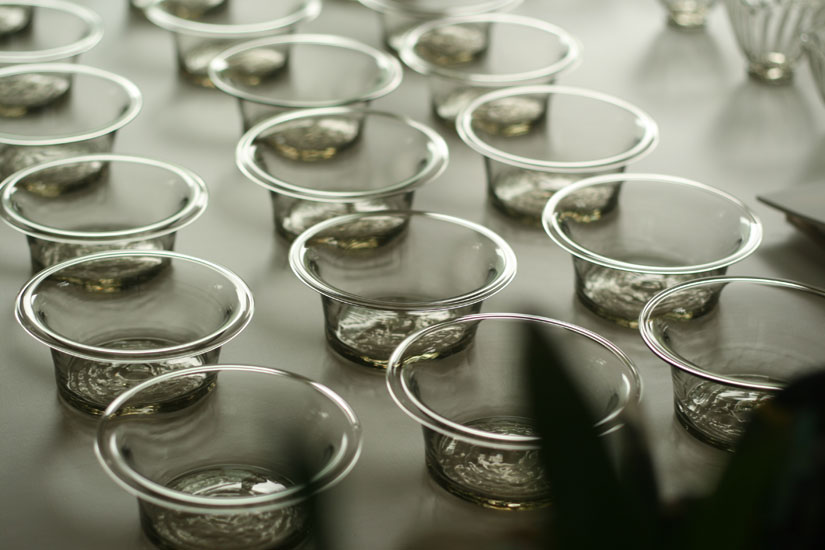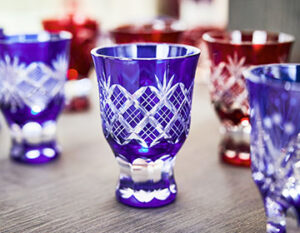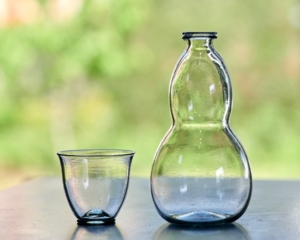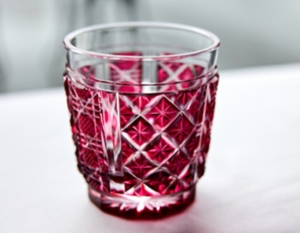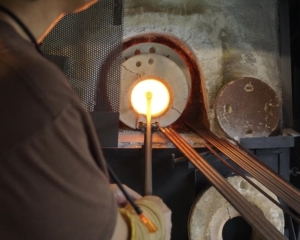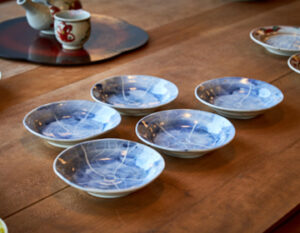Fascinated by the tasteful beauty of blown glass, glass artist Yuko Miura uses traditional techniques to create dishes for daily use. The vessels, designed with ease of use in mind, feel stable in one’s hands and stand dignifiedly on the dining table. Regardless of the genre of cuisine, such as Japanese or Western, or the occasion, she creates glassware that blends in with daily life based on the concept of “daily usable vessels.
Moved to the nature-rich northern part of Okayama Prefecture
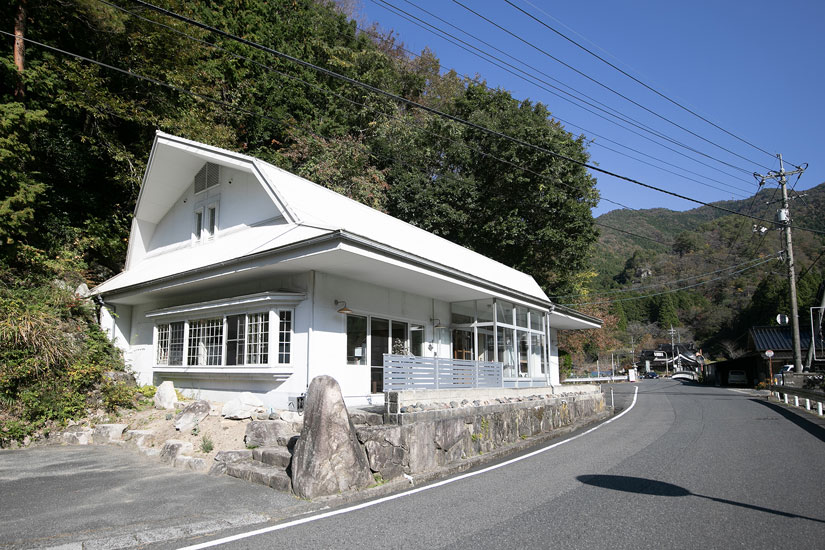
Yuko Miura’s studio, Bamboo Glass, is located in a quiet mountainous area in Kagamino-cho, Tomada-gun, Okayama Prefecture. It is about an hour and a half drive from Okayama City and about 15 minutes to the border of Tottori Prefecture. Nearby are Okutsu Onsen, a hot spring representative of the Mimasaka region of Okayama Prefecture, and the scenic Okutsu Creek, an area blessed with abundant nature throughout the four seasons. Mr. Miura started his workshop here in 2014.
Producing tableware for daily use
Mr. Miura creates colorless clear and pale gray cups, wine glasses, plates, and bowls. Blown glass is a technique with a history of over 2,000 years. I am fascinated by the forms of vessels used by people in the past, so I study the history of blown glass carefully and try to create my own unique designs while considering how easy it is for people to use today.
Discovered blown glass while a university student
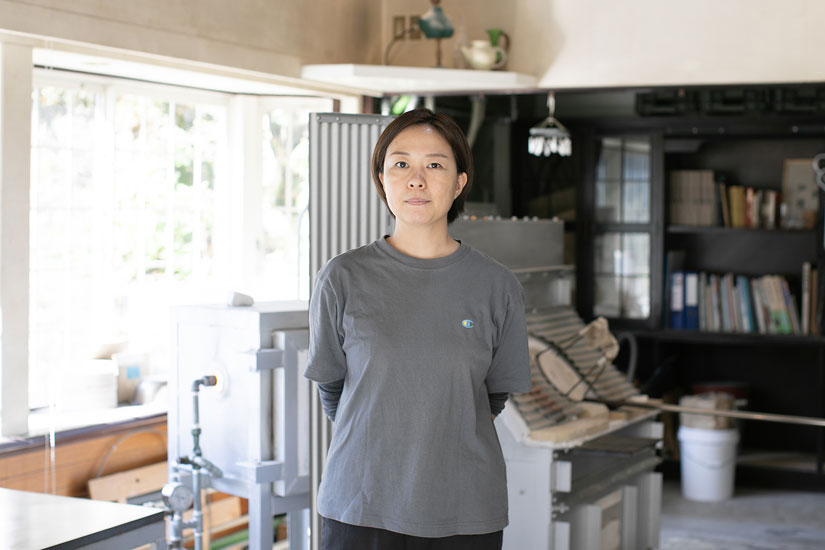
Mr. Miura was born in Osaka Prefecture. While a student at Kyoto University of Art and Design, he was exposed to a variety of crafts, including ceramics and woodworking, and was most attracted to glassworking. Wanting to pursue glassblowing even further, he took classes at “Glass Studio Aaty” in Kyoto City and gained experience in the art of glassblowing. He chose blown glass from among the many glass forming techniques because he is not good at sitting still, he says with a laugh.
That is probably why glassblowing, which requires physical exertion, suits him so well. When he actually tried it, he found the movement of the molten glass interesting, and he began to think, “I want to learn more about blown glass,” and “I want to handle glass in a soft state.
Blown glass is formed by winding high-temperature molten glass around a steel tube called a “blowpipe” and blowing air into it to make it expand like a balloon. It is possible to make glass thinner than that formed by fitting it into a mold, and the technique is said to have remained largely unchanged since ancient Roman times.
After graduating from university, she continued her studies at the Toyama Institute of Glass Art, where she learned basic glass theory, techniques, and the necessary sketches, as well as the know-how to become an independent glass artist. She moved to this area when her husband, Kazu, who was also a staff member, took a job at the “Fairy Forest Glass Art Museum” in Kagamino-cho, Tomata-gun, Okayama Prefecture.
Repeating the same thing over and over again does not produce the same thing.
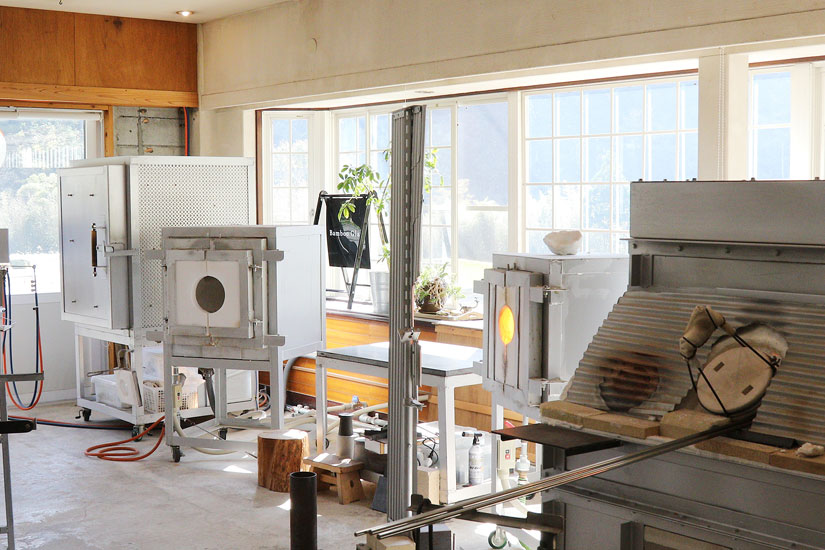
She now has a studio in the corner of her house where she works alone. In his studio, there are two furnaces that he made himself according to the size of the vessels he makes. The furnaces for his work are heated to about 1,000 degrees Celsius. The furnace for melting and storing glass has a working temperature of approximately 1,180°C. This furnace is used to remove bubbles from the glass. This furnace is operated 24 hours a day to remove air bubbles from the glass so that it is ready to work the next morning. While surrounded by the heat generated by the two furnaces, he continues to make 20 to 30 cups from morning to night. He continues, “I never get tired of doing the same thing over and over again, day after day. That’s what’s so strange about it. I think I am making the same thing, but each finished product is somehow different. Maybe that’s why.”
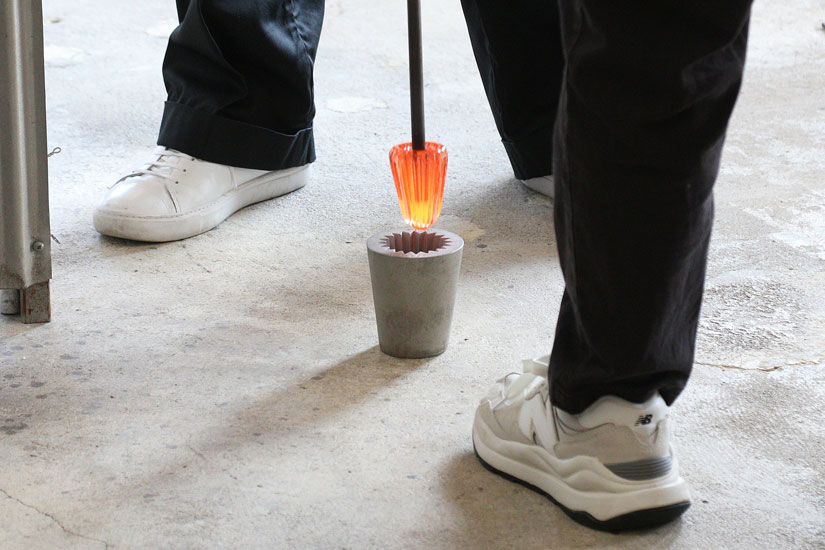
He learned from looking at old glass, and in his own creations, he has arrived at his current style by devising shapes that are easy to wash and thicknesses that do not break easily. In addition, he mixes a small amount of iron and copper with glass to create a grayish color in order to bring out the atmosphere of old glass. The colors of these pieces are not too overpowering and blend in well with the tabletop.
One of his favorite glasses is a glass with legs, which was used in a popular French diner in the 20th century. It is what is called a “bistro glass,” a sturdy glass that can be handled roughly to some extent. He says, “I want to make something that is easy to pick up and has a simple, everyday quality, like this glass.
When he first started creating, he exhibited his work at craft fairs throughout Japan in order to make his creations known. He learned about the reaction to the vessels he made by talking with customers at “Craft Fair Matsumoto” in Matsumoto City, Nagano Prefecture, “Arts & Crafts Shizuoka Tezokuri Ichiba” in Shizuoka City, Shizuoka Prefecture, and “Field of Crafts Kurashiki” in Kurashiki City, Okayama Prefecture. He learned that there were surprisingly few glassware that could be used for both Western and Japanese cuisine without interfering when placed alongside ceramics, and his theme of “glass that fits in with the dining table” became firmly established. Through word of mouth, the number of clients gradually increased.
An environment that connects work and daily life
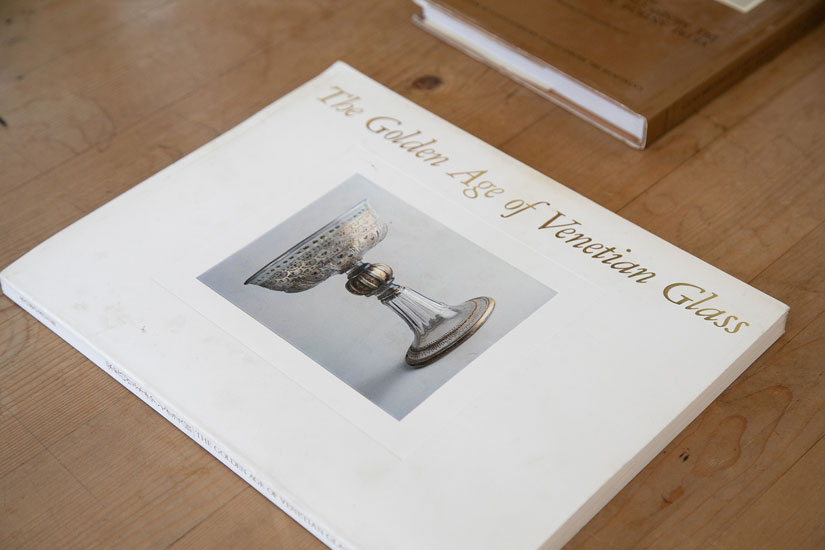
Miura spends his evenings looking at old books on glassware that he collects at antiquarian book fairs and other places, and uses them as motivation for his work. For example, when I look at a photograph of Venetian glass from the 16th century, I am impressed by the effort of the craftsmen who worked hard to make it,” he says. I enjoy finding traces of their work, such as tool marks, and thinking about how they were made in my own way.
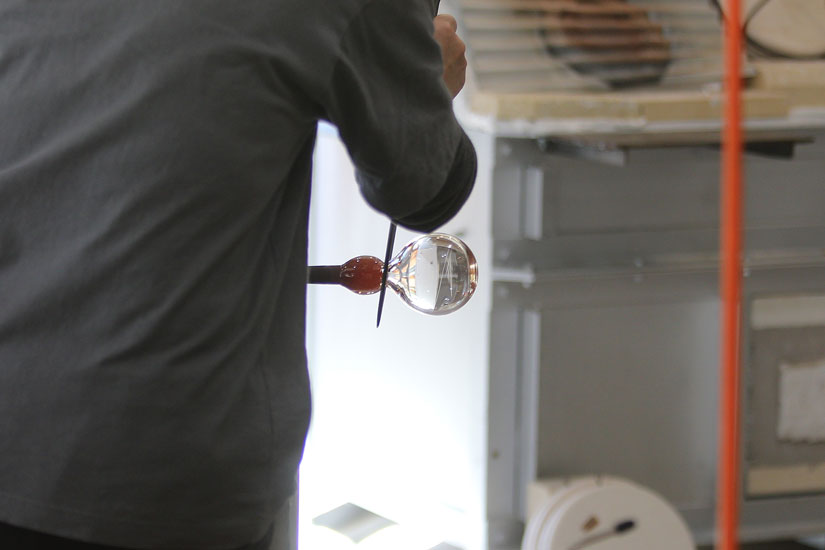
He says that his work and daily life are well connected in his current environment, where he can work freely and without restraint at the foot of the mountain. For example, sweeping up fallen leaves around the house in the morning is an important way to refresh himself before heading off to work. It allows him to enter the workshop with a refreshed feeling of nature. I want to continue living the way I do now,” he says. I want to continue my life in the future. Like the women who have made a living by weaving, I imagine that I am making things day in and day out in the mountains. Work is a part of my life,” she laughs.
Recently, she has decided to turn off the furnace during the warmer months of mid-July through August, so that she can spend her free time, which she has not had before, looking at glassware at museums and collecting glass artifacts. He believes that there must be more to glass than just looking at materials.
Since moving here, he has devoted himself to raising his children, and there was a time when he worked part-time. Even so, somewhere in the back of his mind, he always thought, “I will make blown glass again. Ms. Miura’s strength comes from the fact that she has never doubted her own desire to create. Finding inspiration in her daily life and being able to create is what gives her the greatest joy.
